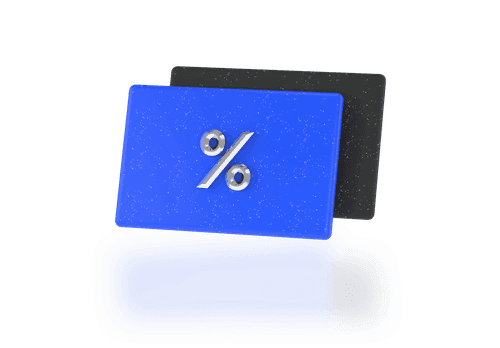Intermediate
Strategies for Successful Forex Trading

The currency exchange market, known for its vastness and liquidity, is the most extensive financial market globally. It boasts a staggering average daily trading volume of approximately $6.6 trillion, far surpassing the combined turnover of major stock exchanges like the New York Stock Exchange.
For those embarking on the journey of forex trading, the initial steps can seem daunting. The key to navigating this dynamic market lies in understanding and employing well-crafted forex trading strategies.
This article aims to provide budding traders with an overview of effective forex strategies, offering insights into the critical components of successful currency trading.
Understanding Forex Trading Strategies
A forex trading strategy is essentially a comprehensive set of guidelines that assists traders in making informed decisions about entering and exiting trades. These strategies can range from straightforward to intricate, depending on each trader's preferences and expertise.
At the core of any effective trading strategy lies a deep understanding of Forex Market Analysis. This analysis is pivotal in forming the rules that dictate when to initiate or close a trade. Traders who rely on technical analysis often find it simpler to establish clear-cut rules for entry and exit points. This is because technical analysis provides quantifiable data and trends, making rule-setting more straightforward.
On the other hand, traders who base their strategies on fundamental analysis may face more challenges in setting rigid rules. Fundamental analysis involves a broader spectrum of factors like economic indicators and political events, requiring more discretion and interpretation. This approach might seem less structured, but it is equally vital in crafting a robust forex trading strategy.
Regardless of the analytical methods used, the importance of Forex Trading Psychology cannot be overstated. A sound strategy also accounts for the psychological elements that impact trading decisions. This includes managing emotions, maintaining discipline, and setting realistic expectations.
A strategy that combines elements of market analysis and trading psychology lays the foundation for a more structured and disciplined approach to forex trading.
Selecting the Optimal Forex Trading Strategy
Let's explore the key factors that play a crucial role in this selection process before we examine some of the most prevalent strategies in the Forex market.
Time Frame
The time frame you choose is a critical element that aligns with your trading style. For instance, if you're inclined towards scalping, which involves capitalizing on minor market fluctuations, your focus should be on shorter time frames, such as 1 to 15 minutes.
Conversely, if you're more of a swing trader, looking for opportunities over a slightly longer horizon, you might find the 4-hour and daily charts more suitable. Therefore, one of the first questions to address is the duration you intend to hold your trades, as this will guide your strategy choice.
Frequency of Trading Opportunities
How often do you intend to open positions? This question is central to your strategy choice. A higher frequency of trades, typical of scalping strategies, demands constant market engagement. Meanwhile, if your approach involves in-depth analysis of macroeconomic factors and fundamental indicators, you might lean towards strategies that operate on higher time frames and entail fewer, but larger, positions.
Considerations for Position Sizing
Equally important is determining the appropriate size for your trades. Successful strategies are those that resonate with your risk tolerance. Overexposing yourself to risk can lead to significant losses. A common practice among traders is to set a risk limit per trade. For example, many adopt a 1% rule, where they do not risk more than 1% of their total account balance on a single trade. Depending on your comfort with risk, you might adjust this limit to 0.5% or even 2%.
In essence, your trading frequency and position size are inversely related. Fewer trades typically mean larger position sizes and vice versa. It's crucial to find a balance that suits your trading style and risk appetite in the dynamic Forex market.
Three Effective Forex Investment Strategies
Having established your preferred time frame, ideal position size, and anticipated frequency of trades, let's explore three well-regarded Forex Investment Strategies. Among these, scalping stands out as a particularly popular choice.
Scalping
- Essence of Scalping: Scalping in the Forex Global Markets is a strategy geared towards capitalizing on minor market movements. The core idea is to execute numerous trades aiming for small, cumulative profits.
- Key Characteristics: Unlike strategies that involve holding positions for extended periods, scalping focuses on very short-term trades. This technique is especially favored in Forex due to its liquidity and volatility, providing numerous opportunities to profit from slight price changes.
- Profit Goals and Trade Management: Typically, a scalper targets profits in the range of around 5 pips per trade, with the expectation that multiple successful trades will accumulate significant gains.
- Risk Management: Effective use of stop-loss orders is crucial in scalping to limit potential losses if the market moves unfavorably. This approach requires meticulous risk management, given the brevity of trade durations.
- Time and Attention Requirements: Scalping demands considerable time and attention, as traders need to consistently analyze charts to identify new opportunities. This makes it a more hands-on and time-intensive strategy compared to others.
- Example in Action: Consider the EUR/USD 15-minute chart as an example. In this scenario, the strategy involves selling whenever the price action slightly exceeds the 200-period moving average, anticipating a subsequent decline. With a stop loss set 5 pips above the moving average and a similar target for take-profit, this strategy aims for numerous small gains. Over a span of about 3 hours, this approach could yield about 20 pips in total, illustrating the potential of scalping in Forex Market Trends.
Scalping, with its focus on short-term gains and active trading style, offers a unique and potentially profitable approach within the realm of Forex trading strategies. It's a method that aligns well with the dynamic nature of the Forex market, catering to those who prefer a fast-paced trading environment.
Day Trading
Day trading is a prevalent strategy in Forex, characterized by buying and selling currencies within the same trading day. This approach is distinct from others like scalping, focusing on a different set of principles and techniques.
- Operational Framework: The essence of day trading lies in its name – no position is held overnight, thereby minimizing the risk associated with longer-term market fluctuations. This strategy differs from scalping, where traders are in and out of the market within minutes. Day traders, on the other hand, stay active throughout the day, managing their open trades and looking for new opportunities.
- Analytical Approach: Utilizing time frames like 30-minutes and 1-hour charts, day traders often base their decisions on a combination of technical analysis and the impact of news events. Forex Fundamental Analysis plays a significant role here, as traders analyze how economic statistics, interest rates, GDP reports, and political events might affect currency values.
- Risk Management: A crucial aspect of day trading is setting limits not only on individual trades but also on overall daily trading activity. A common strategy is to adopt a daily risk limit, such as 3%, to protect the trader's capital and account.
Practical Example on Forex Trading Platforms
Consider the GBP/USD currency pair on a 1-hour chart. A day trading strategy might involve identifying key horizontal support and resistance levels. In this case, the focus is on the resistance level as the price trends upward. The strategy involves monitoring the price as it approaches and touches the resistance line, then waiting for it to start falling back. The stop loss is set above the previous swing high, allowing a buffer for slight breaches of the resistance line.
Conversely, the horizontal support level helps in setting a target for taking profits. For instance, if the stop loss is placed 25 pips above the entry point, and the market moves as anticipated, the strategy could yield about 65 pips in profit.
Position Trading
Position trading stands out in the realm of Forex trading strategies for its long-term orientation and fundamental focus, contrasting sharply with the short-term nature of scalping and day trading.
- Fundamental-Driven Strategy: This approach largely relies on fundamental analysis, with less emphasis on minor market fluctuations which are often deemed insignificant in the broader market context. Position traders devote their attention to macroeconomic factors such as central bank monetary policies, political events, and other key economic indicators.
- Trend Identification: The strategy involves identifying and following long-term cyclical trends in the market. This requires a thorough understanding of Forex Technical Analysis to complement the fundamental perspective, helping traders to decipher and anticipate market movements over extended periods.
- Trade Frequency and Profit Targets: Position trading is characterized by relatively infrequent trading. A position trader might only open a few trades in an entire year, but these trades often aim for substantial profits, targeting several hundred pips per trade.
- Patience and Time Horizon: This strategy is tailored for patient traders, as it often involves holding positions for weeks, months, or even years. The long-term nature of this strategy aligns with principles of Forex Risk Management, necessitating a steadfast approach and a higher tolerance for market variations.
An example of position trading can be seen in the analysis of the dollar index (DXY), especially when viewed on a weekly chart. Here, traders look for significant trend reversals or confirmations that align with fundamental shifts in the market.
Conclusion
Regardless of the trading strategy you choose, whether it be scalping, day trading, or position trading, you can effortlessly implement it with nomo, our brokerage platform. To begin, simply navigate to the dashboard and select the 'Trading' section. Here, you can choose from a variety of Forex assets. Once you've made your selection, open the chart and apply either technical or fundamental analysis to guide your trading decisions.
We offer an environment conducive to successful Forex trading, with advantageous conditions that include no slippage, minimal spreads, and more. These features are designed to support your trading strategy, whatever it may be, and help you trade with confidence and efficiency. With nomo, you have the tools and conditions at your disposal to explore the Forex market and develop your trading skills, regardless of your preferred approach.



















